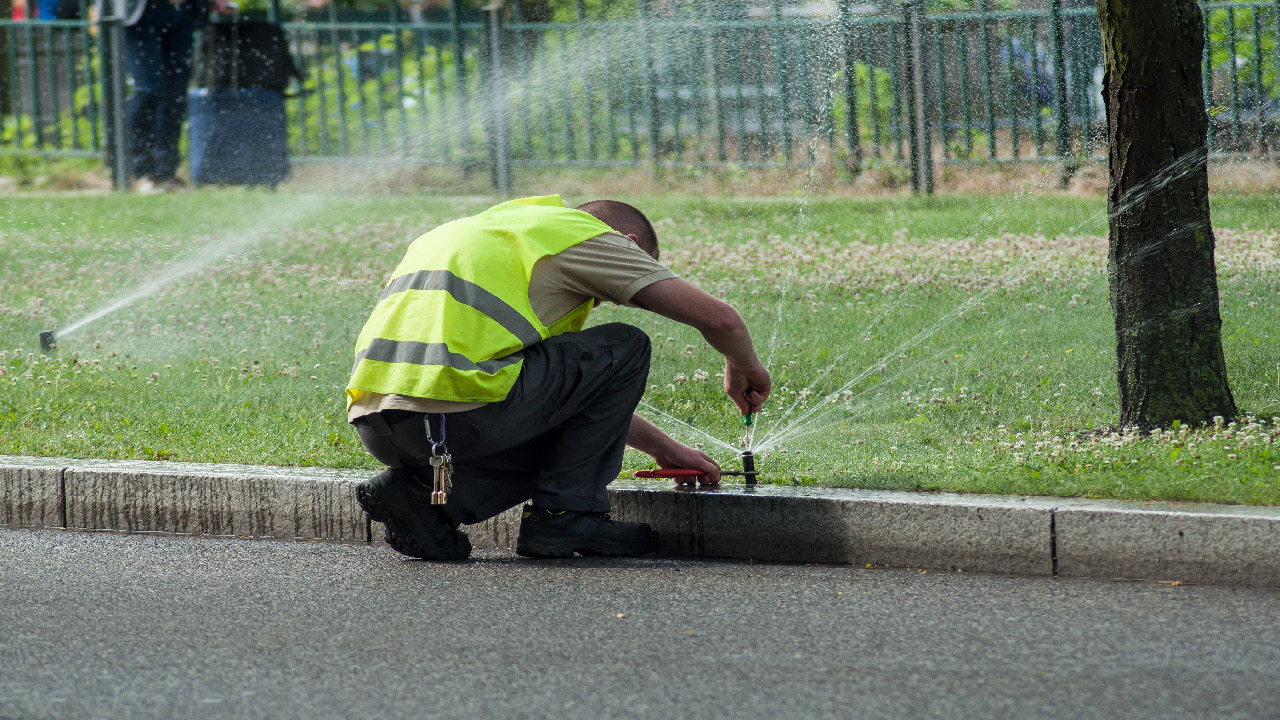5 Steps to Inspect Your Sprinkler System
Jul 25th 2024
With the onset of summer, the need to inspect your sprinkler system also arises. Home irrigation systems such as sprinklers are lifesavers for your garden or landscape.
They keep your lawn lush green and save the area from turning into brown grass patches. Therefore, maintaining your sprinkler system becomes more than a necessity.
A well-maintained irrigation system can last between 20 to 25 years if installed correctly and regularly checked. Here are the 5 steps to check if your sprinkler system needs repair or if it's delivering excellent results as demanded.
1. Check the Controller
Start the inspection process by checking the controller. An irrigation controller allows you to preprogram your watering schedule. It acts as the brain of your sprinkler system. Ensure it is plugged in and receives power. You can change the controller settings and adjust the watering frequency depending on the growth conditions of your garden plants.
When inspecting the controller, check the display for any error messages or faults in the irrigation system. Make sure the programmed schedules are adjusted correctly and working properly. Then, check the wires for any signs of damage. If you've added or removed some plants, you need to change the controller settings accordingly. Here are some tips to modify your watering schedule in hot summer:
- Set a watering schedule and modify it every summer season.
- Water your landscape before 10:00 AM or after 6:00 PM for efficient growth.
- Adjust the watering frequency to 3 to 4 times per week during summer.
You can also adjust your watering schedule based on plant type, weather conditions, soil type, and other factors.
2. Inspect Sprinkler Heads
The next step is to inspect your sprinkler heads carefully. Over time, they can damage or clog due to residue, mud, and debris. This accumulation of dust particles can cause misalignment, resulting in a misdirected water stream. Therefore, it is crucial to inspect sprinkler heads for efficient working of your residential or commercial irrigation system. Here's how you can fix broken or damaged sprinkler heads:
1. Clean Sprinkler Heads
Fortunately, cleaning a sprinkler head is simple, and you can do it in a few minutes. Simply turn off the water and disassemble the head by turning it counterclockwise. Check for clogs, damage, or misalignment. Once you've analyzed the issue, clean the heads properly and reassemble them to their original place in the sprinkler system.
2. Replace Sprinkler Heads
If the issue persists after cleaning, you must replace the sprinkler heads for efficient water distribution. Usually, quality sprinkler heads last longer and need replacement every 10 to 12 years.
3. Assess Sprinkler Head Height
Besides cleaning and replacing, you should also assess the sprinkler head height to test your irrigation system. This involves checking if the heads are positioned accurately or need alignment. It is advised to position them moderately, not too high or too low, for optimal watering. Positioning too low will result in flooding, while too high heads can damage the sprinkler system.
3. Examine the Sprinkler Valves
To inspect your sprinkler system, examine the valves for signs of damage. Like sprinkler heads, valves can be clogged or damaged and need replacement over time. A leakage in the valve can result in water loss and cause problems with the water pressure. Generally, the valves are in the ground inside a valve box. Valves can be easily replaced, just make sure to exchange them with the same type of valve.
4. Evaluate Water Pressure
Here comes the most important step. When checking irrigation for lawns, measure the water pressure by conducting a pressure test in your area. This will help you check the efficiency of the sprinkler body, as any changes in water pressure can affect the irrigation system.
If the pressure is low, it indicates a leakage in the nozzles or a clog in the sprinkler system. Measure ideal water pressure. Generally, sprinklers work efficiently at a pressure range of 30 to 50 PSI. A value above 50 indicates issues in your sprinkler system; you might need to fix them to avoid further damage.
5. Inspect Other Sprinkler System Components
Finally, it's time to evaluate other sprinkler system components. A complete evaluation of your filtering system is crucial to control water distribution in the area. Check other components, such as rain sensors and backflow preventers.
Generally, automated sprinkler systems have a rain sensor to send signals to the controller during rainfall. These sensors are devices specialized to pause irrigation during the rainy season.
Similarly, check for other components, such as pipes. You should also visually check the backflow preventers to detect the presence of leaks. This way, your landscape will remain fresh and lush green.
Conclusion
The functionality and sustainability of your landscape or garden depend on the efficient working of the sprinkler system. It maintains the normal water flow and saves time manually watering the entire area. Therefore, it is advised to inspect your sprinkler system and check for any signs of damage to maintain your space. Ensure each component is working properly and there are no faults in the sprinkler system.
DripWorks has top sprinkler brands such as Hunter, K-Rain, and Rain Bird so you get the best water irrigation system for your lawn and garden. Our products include rotors, spray bodies, nozzles, garden sprinklers, and other sprinkler tools to help you get the most efficient irrigation system for your area.

